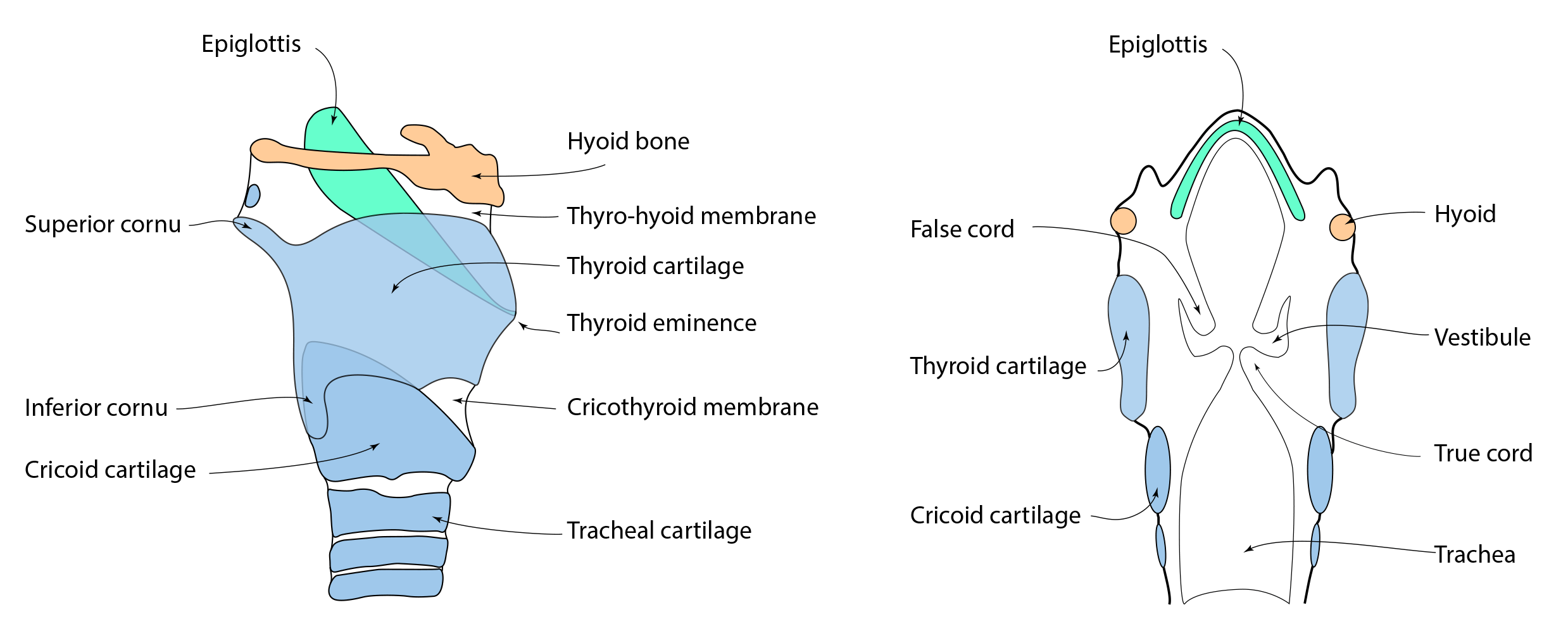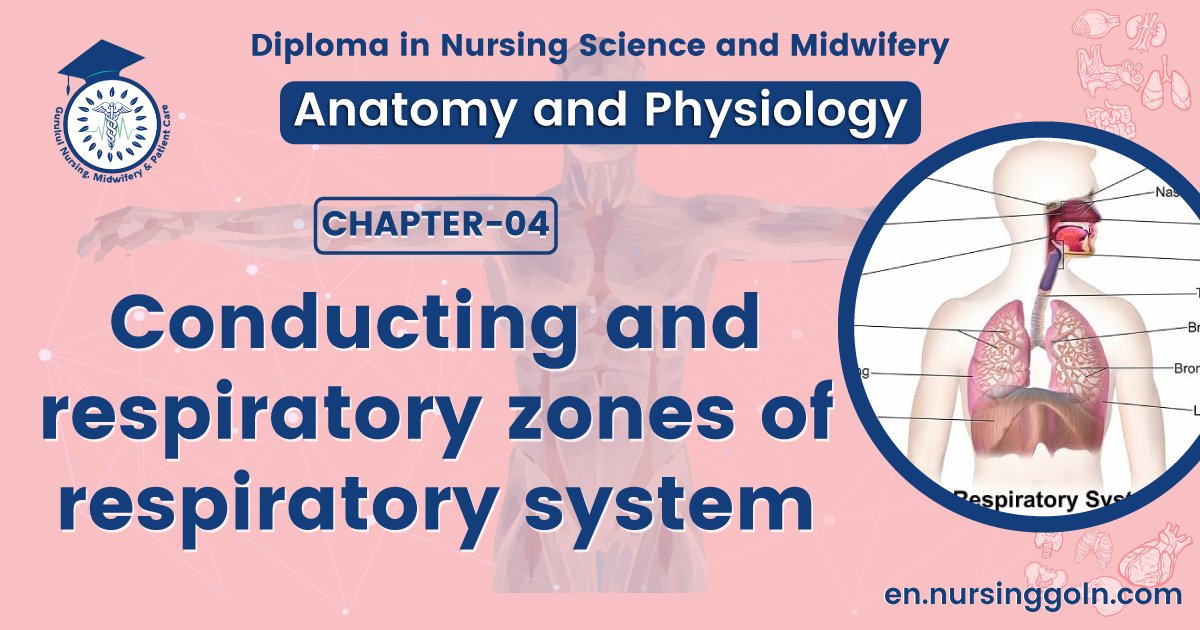Conducting and respiratory zones of respiratory system-The course is designed for the basic understanding of anatomical structures and physiological functions of human body, musculoskeletal system, digestive system, respiratory system; cardiovascular system; urinary system, endocrine system, reproductive system, nervous system, hematologic system, sensory organs, integumentary system, and immune system.The aim of the course is to acquire knowledge and skills regarding anatomy and physiology.
Conducting and respiratory zones of respiratory system

Position:-
The larynx (LAIR-inks), or voice box, is a short tube of cartilage lined by mucous membrane that connects the pharynx with the trachea It lies in the midline of the neck anterior to the fourth, fifth, and sixth cervical vertebrae (C4 to C6). It is about 5 cm lenght, 4 cm in width and 3.5 in its anteroposterior diameter
Structure:-
The larynx is composed of several irregularly shaped cartilages attached to each other by ligaments and membranes. The main cartilages are..
- 1 thyroid cartilage
- 1 cricoid cartilage
- 2 arytenoid cartilage
- 1 epiglottis

The thyroid cartilage, which consists of hyaline cartilage, forms the anterior wall of the larynx. Its common name (Adam’s apple) reflects the fact that it is often larger in males than in females due to the influence of male sex hormones during puberty.
The cricoid cartilage is a ring of hyaline cartilage that forms the inferior wall of the larynx and is attached to the first tracheal cartilage.
The paired syrennid cartilages, consisting mostly of hyaline cartilage, are located above the ericoid cartilage. They attach to the true vocal cords and pharyngeal muscles and function in voice production. The cricoid cartilage is the landmark for making an emergency airway (a tracheotomy)
The epiglons (epi over, glottis tongue) is a large, leaf-shaped piece of elastic cartilage that is covered with epithelium The “stem” of the epiglottis is attached to the anterior rim of the thyroid carulage and hyoid bone. The broad superior “leaf” portion of the epiglottis is unattached and is free to move up and down like a trap door. During swallowing, protecting the lungs from any accidental inhalation of foreign objects.
Structures associated with the larynx:
| Superiorly | The hyoid bone and the root of the tongue.. |
| Anteriorly | The muscles attached to the hyoid bone and the muscles of neck. |
| Inferiorly | It is continuous to the trachea. |
| Posteriorly | The laryngopharynx and 3 to 6th cervical vertebrae |
| Laterally | The lobe of the thyroid gland. |
Larynx

- Production of sound: Sound has the properties of pitch, volume and resonance.
- Protection of the lower reparatory tract During swallowing (deglutition) the larynx moves upwards, occluding the opening into it from the pharynx and the hinged epiglottis closed over the larynx. This ensures that food passes into the oesophagus and not into the lower respiratory passage.
- Passage for air: This is between the pharynx and trachea
- Humidifying, filtering and warming the inhaled air: These continue as inhaled air travels through the larynx.
(Ref.-J. Tortora, 8h ed,P-462 + Ross and wilson- 9 ed, P-244,245,246)
Read more:
